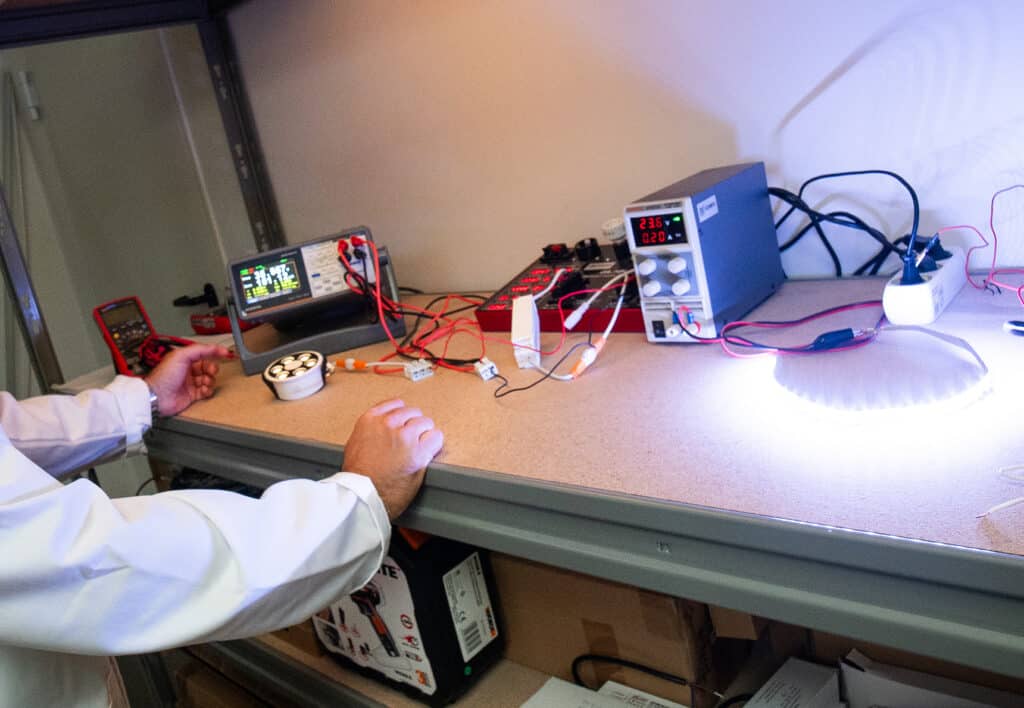As we usher in the new year, we present another instalment of our technical articles. In this post, we delve into the concept of Photobiological Risk, explaining its definition and the interpretations to consider when this data appears in the technical information of luminaires. Like in our previous articles, this concept is often mentioned in product information, catalogues, specifications, etc., but it is not always interpreted properly. Our aim is that the information presented here contributes to a better understanding.
What is Photobiological Risk?
In general terms, it can be defined as the risk of ocular or dermal damage caused by the light emission from a lamp or lamp system.
How is it determined?
The UNE-EN 62471:2009 standard for the Photobiological Safety of Lamps and Lamp Systems, as outlined in Section 1. Purpose and scope of application:
- Provides guidance for assessing the photobiological safety of lamps and lamp systems, including luminaires. Specifically, it establishes exposure limits, the reference measurement technique and the classification scheme for evaluating and controlling the photobiological risks of all broadband incoherent sources of optical radiation, powered electrically. This includes LEDs but excludes lasers, within the wavelength range from 200 nm to 3,000 nm.
In essence, this standard allows us to categorise risk groups in a graduated manner based on established technical criteria, ensuring that every lighting product placed on the market can be associated with a specific level of Photobiological Risk. This way, their uses and installations can be adjusted to prevent any harm to the users of the facilities where they are located.
These risk levels are identified as follows:
- Risk Group 0_RG0: No risk – Risk
- Group 1_RG1: Low risk – Risk
- Group 2_RG2: Moderate risk – Risk
- Group 3_RG3: High risk
For interpretation purposes in luminaire applications, they translate as follows:
- RG0: Can be used.
- RG1: Can be used.
- RG2: Can be used as long as the manufacturer’s instructions regarding the distance of light sources to the human eye are respected.
- RG3:NOT RECOMMENDED FOR USE
In both RG2 and RG3 cases, the product, product information, etc., should clearly display the following icon, and the instructions should contain information regarding the use of such products.
Finally, we would like to remind you that ALL products supplied by JISO currently fall within RG0 and RG1 groups, either because the fitted light source already complies or because the luminaire design allows it, making them suitable for normal use.


